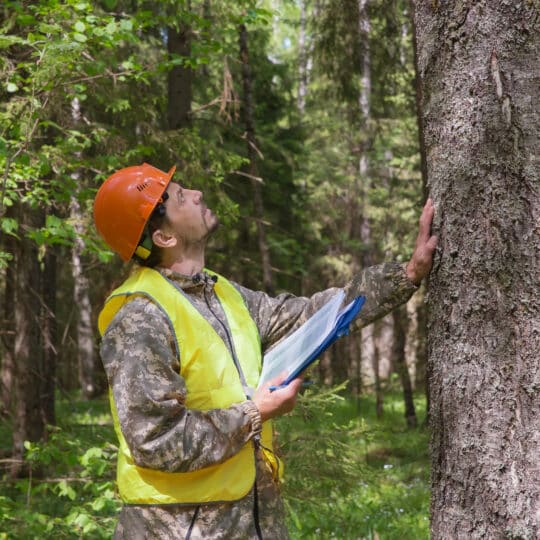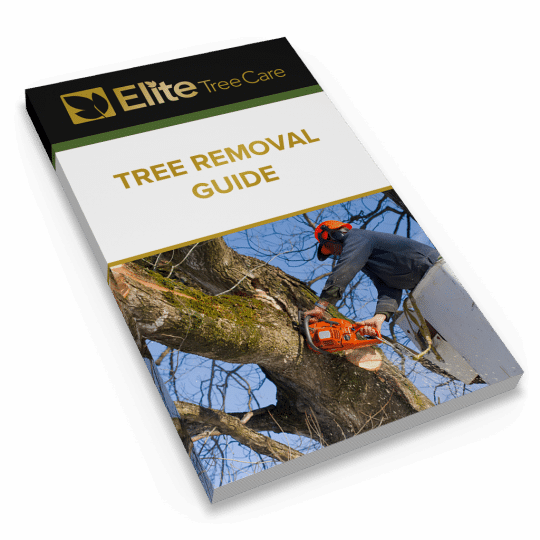15 Things Arborists Consider Before Removing a Tree
What You Can Look for Before Calling a Pro
Posted
July 3, 2025

Thinking about removing a tree? Think like a professional. Here are 15 things arborists consider before removing a tree. Now you can do your own evaluation before calling a tree removal company and stay in-the-know like a pro.
15 Things Arborists Consider Before Removing a Tree
Since tree removal is an involved, hazardous, and costly process, it’s important to carefully evaluate the tree’s condition before deciding removal is the best option. There are several factors to focus on during inspection, including a tree’s location, overall health, and structural integrity. Here’s what they typically look for:
- Location. If a tree is too close to high traffic areas, a house, building, or power lines, it increases the risk of damage by dropping leaves, branches, and potentially falling, especially during a storm.
- Species. Native trees are more likely to stand up to local environmental factors. But trees not accustom to certain temperatures are more at risk for health problems. Some types of trees are also more invasive or create excessive debris from leaves and seeds.
- Pruning Practices. A professional company can tell when a tree hasn’t been pruned properly or regularly. Too much cutting at the wrong time can compromise a tree’s health and structure.
- Dead or Dying Branches. Another sign of a stressed tree. These brittle branches are at greater risk of falling and creating a safety hazard.
- Decay and Rot. Look for soft, crumbly bark and branches; mushrooms or fungi growing on the trunk or near the roots; and splits, cracks, or hollow cavities in the trunk. These can all indicate structural weakness.
- Shedding Bark. Some trees naturally shed their bark during the growth process, but if the bark is loose or bare and the surface underneath is not green, then this is a sign of a nutrient problem.
- Disease. Signs include discolored or misshapen leaves, premature leaf drop, cankers, or lesions on the bark. Left untreated, a disease can weaken the tree.
- Pests. Holes in the bark, sawdust at the base, or visible insects indicate an infestation. There could already be significant interior damage.
- Stunted Growth. If your tree seems to be growing at a slower rate or you notice the canopy thinning, it could be a sign of disease, pests, nutrient deficiencies, or other environmental factors.
- Leaning. A slight lean is natural, but a sudden or significant lean is more hazardous, especially with exposed roots.
- Weak Branch Attachments. If your tree has a Y- or V-shaped crotch where branches meet at a narrow angle, it’s more prone to splitting.
- Root Damage. Check the base of the tree for soil erosion, fungi, and visible signs of root damage. Unhealthy roots negatively impact tree overall health, growth, and stability.
- Soil Conditions. Compacted or waterlogged soil, drought, and erosion can affect a tree’s health and stability.
- Weather. Strong winds, lightening, and heavy snow or ice all have the ability to damage a tree, especially one already weakened by other environmental factors.
- Permits. If it’s decided the tree needs to be removed, a pro will know what local regulations and requirements should be in place before any work can begin.
Even if you do your own initial evaluation of the tree, a certified arborist’s assessment is crucial for proper tree removal. Once the problem is diagnosed, alternatives are considered, and project scope is planned, a professional tree removal company will have the necessary tools and experience to handle the job safely and efficiently.
If you’re worried about the current location, health, and structural integrity of your tree, contact Elite Tree Care for a professional evaluation.

Download Your FREE Tree Removal Guide
Even dedicated DIYers should think twice before taking on the task of tree removal. Our guide will help you decide whether to hire a tree service and how to get the most value for your money.